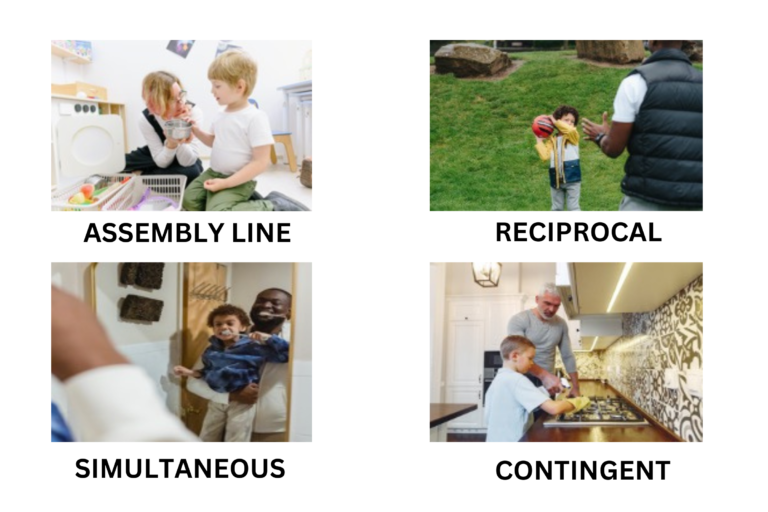Why Co-Regulatory Patterns ?
Individuals on the autism spectrum or with other challenges such as ADHD, attachment issues, emotional regulation problems, and sensory integration issues often perceive the world as chaotic and disorganized.
Patterns offer a route to cognitive or sensory “organization.”
For example, children who exhibit agitation or engage in seemingly random behaviors may be described as “disorganized.” Introducing them to patterns can provide a significant source of comfort and structure. It helps them build trust and feel secure when interacting with others.
Types of Co-Regulatory Patterns ?
Following are the 4 type of patterns which should cover almost all the activities we do in our daily lives.
- Assembly line pattern (giver-putter) (Parent picks up a toy and give it to the child to keep in a box)
- Reciprocal (I do something, you do the same thing but one after another – taking turns) (Passing ball to each other)
- Simultaneous (same actions, same time) (Both parent and child picks up toys and put it together in the box)
- Contingent (I do something, you do something) (Dusting – Child sprays, parent wipe)
Think about any other activity which you do with your child, and mostly you will be able to fit that activity in one of these patterns.
The goal is to start small and slow with one pattern at a time and use that pattern in various activities.
Usually assembly line pattern is the easiest to start with and then move in the order it is mentioned.

Benefits of Working with Co-Regulatory Patterns ?
- Establish Safety and Predictability: Building trust by creating a secure and predictable environment.
- Organize Behavior of “Disorganized” Children: Providing structure and guidance for children with behavioral challenges.
- Motivate Language Production: Encouraging verbal communication through engaging activities.
- Foster Co-regulation: Facilitating collaborative interaction between child and caregiver.
- Teach Self-regulation: Helping children manage their emotions and behaviors independently.
- Provide a Template for Variation: Creating a framework for introducing new challenges and adjustments.
- Enhance Visual Skills: Improving the child’s ability to observe and comprehend their surroundings.
- Boost Confidence and Emotional Expression: Increasing competence and confidence in various activities, leading to enhanced emotional expression.
Some really nice stuff on this web site , I like it.
Shagufta baig
Very nicely explained. I would love to hear more
Give tips on Self regulation technique for my son please